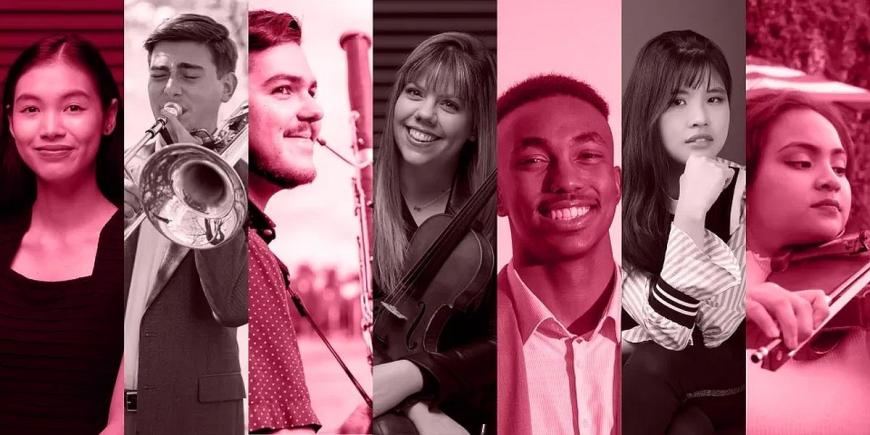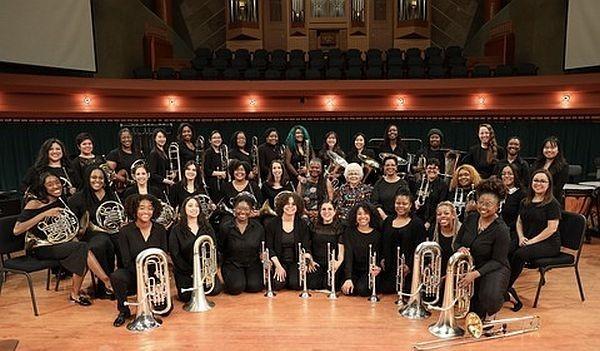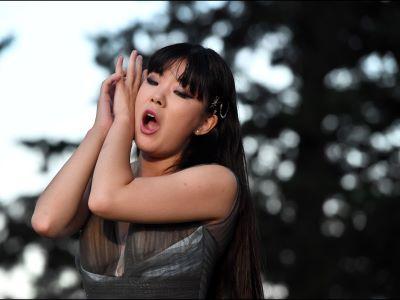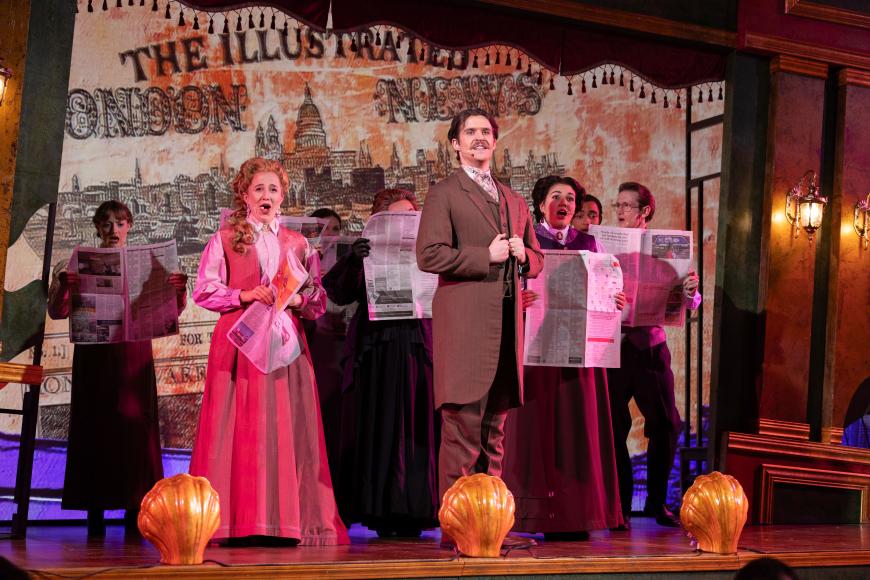
With current high prices for entertainment, it’s good to know that the cost of some of the finest concert experiences in town hasn’t changed at all.
Tickets for most SF Conservatory of Music student and faculty concerts and masterclasses are unchanged and a stunning 90% of them are still free. Because of limited seating, advance reservations are required online.
As SFCV has often stated over the past decades:
Attending student concerts — especially at the conservatory level — has only benefits, no liability.
Most of the programs are free. Your attendance provides invaluable experience for the performers. No need to “dress up.” These events usually provide the listener with a fresh encounter of both the people onstage and the music they perform. And there is great delight in saying, years later, “I knew him or her when …"

Here are just a few upcoming Conservatory concerts:
— March 1, Madison Barton and Cora-Melin Mikat, sopranos; also String Showcase Recital
— March 2, Musical Bouquets by Ian Alexander, Jacob Katz, and Noah Sanchez; also Ruiwen Liu and Eric Yang, historical performance cello
— March 3, Hot Air Music Festival: a student-run festival that focuses on new music — March 5, Chamber Music Tuesday with SFCM faculty cellist Jennifer Culp, pianist Julio Elizalde, and violinist Simon James performing with some of their own students
— March 8 and 9, SFCM Opera and Musical Theater presents a free opera production, Missy Mazzoli’s Proving Up
— March 30, guest conductor Mei-Ann Chen leads the SFCM Orchestra, Chih-Yao Chang, assistant conductor, Parker van Ostrand, piano, in a program of music by Beethoven, Sergei Rachmaninoff, Unsuk Chin, and Robert Schumann
What does preparation look like for performance by students? SFCV asked Chea Kang, 25, a first year Artist Diploma voice student, who will sing Romilda in Serse.
“I have a necklace that I purchased in Italy that has a half brain and half heart pendant. Likewise, I think singers should practice and prepare the music with brain and perform with our heart. So whenever I have a performance coming up, I try to be musically prepared before rehearsals, so that I would have all the liberty to play with the musical elements with the coaches and conductors. Then I put together the storytelling aspect with the directors in operas, or by myself in solo concerts.”

And how does she feel about her role in the Handel opera?
“I adore the music of Serse. I think it is simply sublime. The music of Romilda looks much simpler on paper compared to other Handel roles I have played, like Cleopatra from Giulio Cesare and Emilia from Flavio. However, it captures so much love and emotion in those simple gestures, which requires tasteful choices from the singer.
“I think she is honest and confident but has her own inner conflicts, which test her faith. Especially the beautiful sixteenth-note triplets in her aria ‘Nemmen con l’ombre’ [Never shall the shadow of infidelity] reflect her thoughts being indecisively moved around, but finally arrive to her faithfulness. I think she is fiery and seeks for freedom, but her major strength lies on her knowing her goodness in her heart.”
Kang says she experiences the “magical power” of music when she performs, bringing her “a cathartic joy whenever I am completely soaked in unbelievably gorgeous music, or have a chance to play a character that is completely opposite from me.
“I believe music connects people to people. To be able to give a gift of singing to people, the work cannot be done alone: we collaborate with pianists, instrumentalists, and to put up an opera, we work with directors, dancers, and many other artists and staff behind the scenes.
“Through the process of putting up a show, we all work together for a long time, seeking for connections with each other to create something magical together; and when we finally find something clicks, we then look for the connection between us and the audience who are willing to be immersed in the world that we create.”
22-year-old Seth Hanson, senior at SFCM who had a lead role in A Gentleman's Guide to Love and Murder, speaks of his experience of performing:
“I’ve done a lot of shows during my undergrad at SFCM, both inside and outside of school. I learned to always be present in the moment, whether for a musical, an opera, a symphony, a concert, a play — you always have to be ready and prepared for anything.
“The show was a speeding bullet train; as soon as the curtain was lifted, there was no stopping. Especially since my character, Monty was the crazy ringmaster of this murderous comedy. Even when breaking the fourth wall to the audience, you have to be present at the moment and treat the audience almost as your scene partner. This is why theater and music are so beautiful. Not only is it collaborative on and backstage, but it’s collaborative offstage with the audience.”

Of the experience with the performance of a musical comedy, Hanson says:
“For the longest time, we were curious to see how the audience would react to certain jokes, moments, and characters within the show. When we only have two performances, we must make sure those moments land. We were overjoyed to see the response and laughter from the audience during our performances.
“The audience loved it when we broke the fourth wall, whether it was a moment of foreshadowing or satire. It correlated very well with the direction given to us by Michael Mohommed and Michael Horsley. It was played off as actors that are playing these characters, like a show within a show, so any moment to take to the audience added to the comedy and satire already brilliantly written.”
Of preparation, Hansen says he shows up in the theater two or three hours before the show starts, and “One of my favorite things during this time is to walk around onstage. Having a good connection with the stage and set pieces you’re working with is vital.
“After I'm all situated, I do a quick 15-minute vocal and physical warmup. I do a broad range of vocal warmups. First, I will start with raspberry trills and then work on vowel exercises to help inform my core voice. Staying deep within the body, feeling loftiness and height in the voice. Then, I move to one or two pop/musical theater-style exercises, such as belting, while still retaining that good, strong, core voice.”
To hear more about student lives and experiences, see the Conservatory’s feature, “My Life in Music: Seven Students Share Their Stories.”


